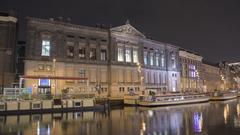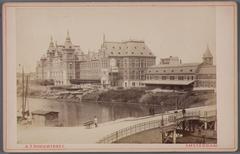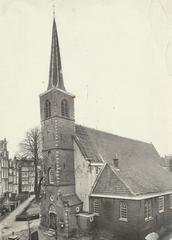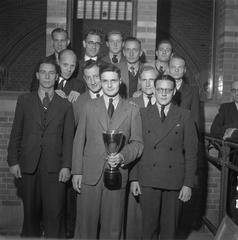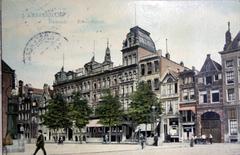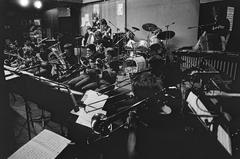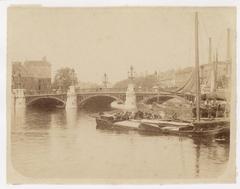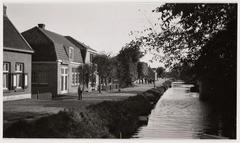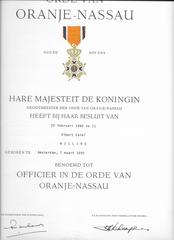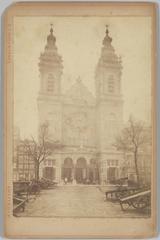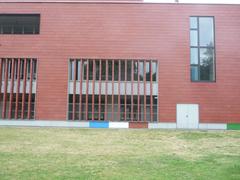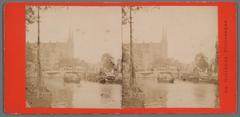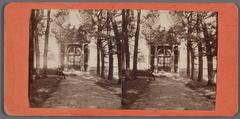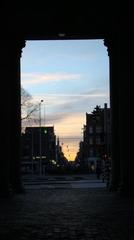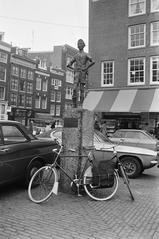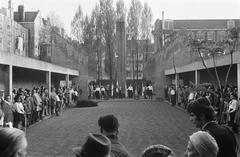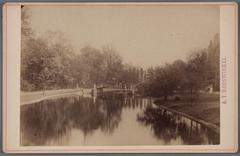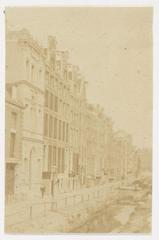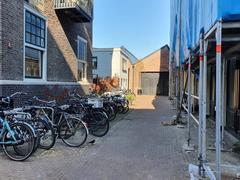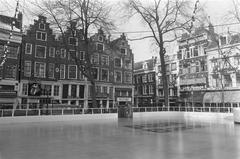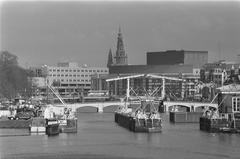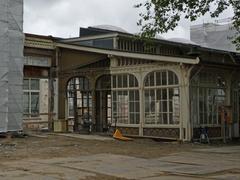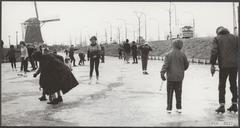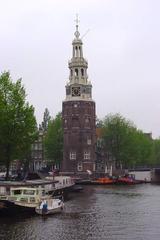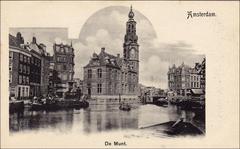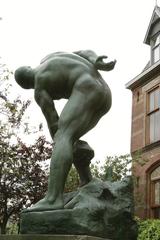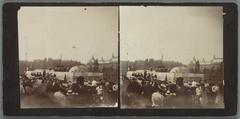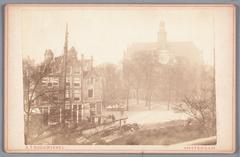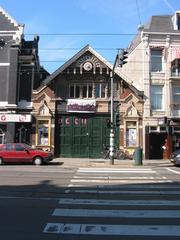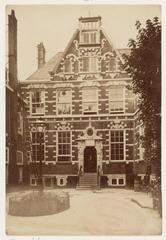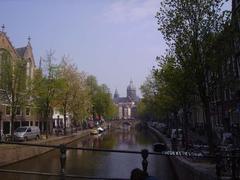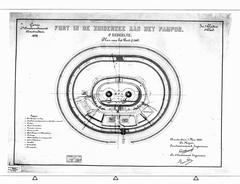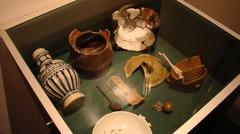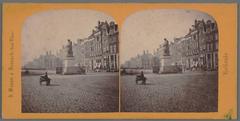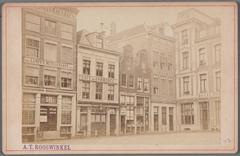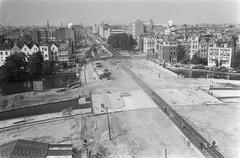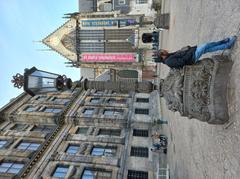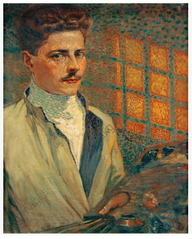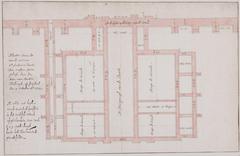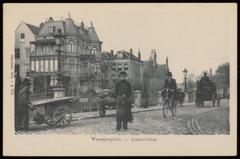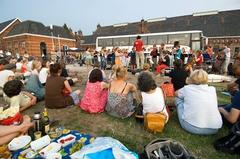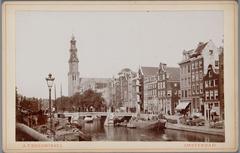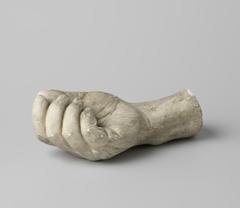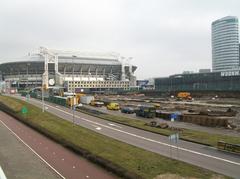
Museum Het Schip Amsterdam: Visiting Hours, Tickets, and Historical Guide
Date: 04/07/2025
Introduction
Museum Het Schip is a remarkable Amsterdam historical site and a prime example of early 20th-century social housing reform and architectural innovation. Situated in the Spaarndammerbuurt district, Het Schip stands as a testament to the Amsterdam School movement, blending expressive design with a commitment to improving workers’ living conditions. This comprehensive guide provides detailed information on Het Schip’s history, visiting hours, ticketing, accessibility, and tips for making the most of your visit.
Table of Contents
- Historical Background
- Visiting Het Schip: Practical Information
- Guided Tours and Exhibitions
- Tips for Visitors
- Nearby Attractions
- Frequently Asked Questions (FAQ)
- Conclusion
- Sources
Historical Background
Origins and the Amsterdam School
Het Schip (“The Ship”) was designed by Michel de Klerk and completed between 1917 and 1921 for the socialist housing association Eigen Haard. The building’s ship-like silhouette, distinctive brickwork, and maritime motifs reflect both its name and its location in a neighborhood historically linked to Amsterdam’s shipping industry (Wikipedia; Blue Crow Media).
The Amsterdam School movement, active from 1910 to 1930, sought to address the poor living conditions of the city’s working class by providing well-designed, healthy, and inspiring housing. Architects of this movement, including de Klerk, drew inspiration from H. P. Berlage and the Arts and Crafts tradition, emphasizing expressive forms and integrated decorative arts (Encyclopedia.Design; Apollo Magazine).
Design Philosophy and Social Reform
The catalyst for Het Schip’s construction was the Woningwet (“Housing Act”) of 1901, which allowed housing cooperatives to replace slums with modern, hygienic dwellings. Het Schip was conceived as a “workers’ palace”—a bold architectural statement intended to foster dignity and community among residents (Jacobin). The building originally housed 102 apartments (now 82), a post office, and a school, with amenities such as multiple rooms per apartment, natural light, indoor plumbing, and communal gardens (Wikipedia).
Architectural Features and Symbolism
Het Schip’s design typifies the Amsterdam School style, featuring:
- Undulating and patterned brickwork
- Dramatic towers and asymmetrical massing
- Decorative ceramic tiles and wrought iron
- Stained glass and sculptural reliefs by artists like Hildo Krop
These elements were intended not just for aesthetics, but to elevate daily life and instill pride in the working class (Amsterdamse School Blog; Museum Het Schip).
Preservation and Museum Transformation
While economic and political changes after World War II led to simpler housing projects, Het Schip’s architectural and social significance ensured its preservation. In 2001, the former school and post office were converted into Museum Het Schip, dedicated to educating visitors about the Amsterdam School, social housing history, and the building’s unique design (Museum Het Schip).
Visiting Het Schip: Practical Information
Location and Getting There
- Address: Oostzaanstraat 45, 1013 WG Amsterdam
- Public Transport: Bus 22 or 48 (to Spaarndammerstraat), Tram 3 (to Haarlemmerplein)
- By Foot: About 25 minutes walk from Amsterdam Central Station via Haarlemmerstraat and Westerpark
- Parking: Limited street parking; disabled parking on Hembrugstraat (Able Amsterdam)
Visiting Hours
- Open: Tuesday to Sunday, 11:00–17:00
- Closed: Mondays, April 27 (King’s Day), December 25 (Christmas), January 1 (New Year’s Day)
- Open: Easter Sunday, Easter Monday, Whit Monday (WhichMuseum)
Tickets and Admission Fees
- Adults: €16.50
- Students: €8.00
- Children (5–12): €5.00
- Children (0–4): Free
- Museumkaart, I Amsterdam City Card holders: Free
Tickets can be purchased in advance online or at the museum entrance. Booking a time slot is optional but advised during busy periods (Museum Het Schip; I Amsterdam City Card).
Accessibility
Museum Het Schip strives for accessibility, but due to its historic nature, some areas have limitations:
- Ground-level entrance with manual door; lifts to upper floors
- Accessible toilet with grab rails
- Wheelchair available to borrow
- Accessible post office and main exhibition spaces; reconstructed slum dwelling and museum apartment less accessible
- Ticket desk may be high for some wheelchair users
- Disabled parking nearby (Able Amsterdam; I Amsterdam)
Facilities and Amenities
- Museum Café: Light meals, coffee, and rotating art exhibitions
- Museum Shop: Books, souvenirs, and architecture-themed gifts
- Restrooms: Including accessible toilets
- Cloakroom: Available for coats and bags
- Wi-Fi: Free throughout the museum
Guided Tours and Exhibitions
Tour Highlights
- Guided Tours: Included with admission; depart hourly from 11:00 to 16:00, with the 15:00 tour always in English (Amsterdam Tips)
- Languages: English, Dutch, French, German, Spanish, Italian
- Group Bookings: Required for groups of nine or more; smaller groups join scheduled tours
Tours explore the exterior, post office, reconstructed slum dwelling, and a restored 1920s apartment—showcasing period features like the blue kitchen and communal living room. Some tours include access to the tower and attic, subject to availability (DutchAmsterdam).
Permanent and Temporary Exhibitions
- Permanent Exhibition: “Amsterdam School: Constructed Ideals”—traces the movement’s philosophy, design, and social impact with artifacts, models, and period furnishings (hetschip.nl)
- Restored Post Office: Original fixtures and decorative elements
- Museum Apartment: Furnished as in the 1920s
- Street Furniture Collection: Benches, lampposts, and more in the museum garden
Temporary Exhibitions
- The Workers’ Paradise: World Garden Cities (Oct 2024 – July 2025): Explores the garden city movement’s impact on urban planning (hetschip.nl)
- Rotating Art Exhibitions in Café: Contemporary artists on display every three months
Educational Activities
Workshops, lectures, and family activities engage visitors of all ages and backgrounds (amsterdamcitycard.com).
Tips for Visitors
- Visit on weekday mornings or late afternoons to avoid crowds
- Arrive early for English-language tours (15:00)
- Wear comfortable shoes for stairs and walking outdoors
- Photography is generally allowed; check for restrictions
- Bring an umbrella or raincoat for Amsterdam’s variable weather
- Combine your visit with a walk through Spaarndammerbuurt to see more Amsterdam School architecture
Nearby Attractions
- Museum De Dageraad: Amsterdam School visitor center, Burgemeester Tellegenstraat 128, open Thursday–Sunday, 13:00–17:00, English tour at 15:30
- Shipping House (Het Scheepvaarthuis): Now the Amrath Hotel, guided tours by request
- Jordaan District, Anne Frank House, Westerpark, and Westergas complex: All easily accessible from Het Schip
Frequently Asked Questions (FAQ)
Q: Where can I buy Museum Het Schip tickets?
A: Online via the official website or at the museum entrance.
Q: What are Museum Het Schip visiting hours?
A: Tuesday to Sunday, 11:00–17:00; closed Mondays and select holidays.
Q: Is Museum Het Schip wheelchair accessible?
A: Partially—main areas are accessible, but some exhibition spaces have limitations.
Q: Are guided tours available in English?
A: Yes, the 15:00 tour is always in English; other times and languages available.
Q: Is the museum family-friendly?
A: Yes; children under 5 enter free, and family-friendly exhibits and activities are available.
Conclusion
Museum Het Schip offers a unique window into Amsterdam’s architectural, social, and cultural development. Its expressive design and social mission reflect the progressive ideals of the early 20th-century Amsterdam School movement. With accessible visiting hours, diverse ticket options, enriching guided tours, and modern amenities, the museum provides a rewarding experience for architecture enthusiasts, history buffs, and families alike.
For the latest information on visiting hours, tickets, and exhibitions, always check the official website. Download the Audiala app for guided audio tours and updates, and follow Museum Het Schip on social media for news and events.




